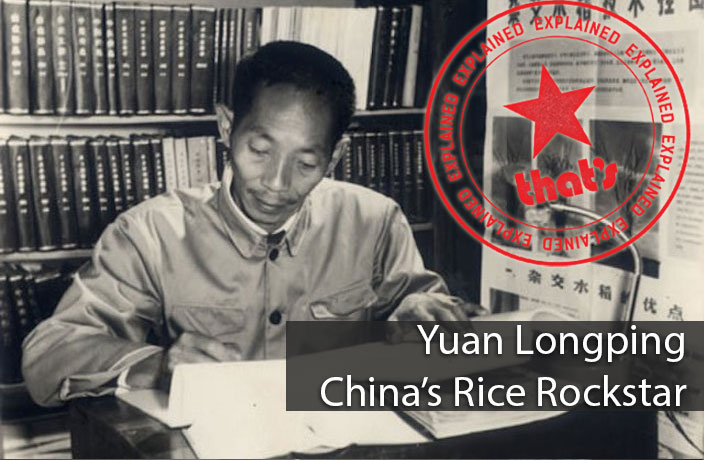Chinese social media was inundated over the weekend with a rare outpouring of grief for the passing of Yuan Longping, the grandfather of hybrid rice.
Yuan passed away on May 22 at the age of 90 from multiple organ failure at a hospital in Changsha, Hunan province. According to South China Morning Post, Changsha police reportedly dispersed crowds who gathered at Mingyangshan funeral home where a memorial is scheduled for Monday.
The Weibo hashtag ‘farewell to Yuan Longping’ had almost 1.4 billion views as of press time. SCMP pointed out that a nationwide outpouring of sadness is uncommon, save for the passing of Communist Party top brass like Zhou Enlai and Deng Xiaoping.
President Xi Jinping extended condolences to Yuan’s family, which were conveyed by the secretary of the CPC Hunan Provincial Committee, according to Hunan Daily.

Flowers line the steps of the Hunan research center where Yuan worked. Image via @兵哥哥教我踢正步/Weibo
In Changsha, crowds lined the streets in the rain to say farewell as Yuan’s hearse drove past on Saturday. Mourners also placed bouquets of flowers on the front steps of the Hunan Hybrid Rice Research Center where Yuan had worked.
Beyond China, researchers in the field of food security expressed their gratitude for Yuan’s contribution. The UN Department of Economic and Social Affairs expressed sadness at the loss of “a true hero [who] saved millions of people from hunger” via a Twitter post.

Tweet from the UN Department of Economic and Social Affairs. Screengrab via @UNDESA/Twitter
Yuan was born in Beijing on September 7, 1930. He became a researcher in the field of agriculture by the 1950s, before the Great Leap Forward. He often said in interviews that the extreme hunger he witnessed caused him to pursue a career in food security, as per SCMP.
In 1966, Yuan published a book on his method of using three different species of rice in a cross-pollination process called the ‘three-line method,’ which would produce higher quality seeds. Then, in 1973, the theory he had been developing reached a turning point after the discovery of a new species of wild rice in Hainan Island.
Japanese scientists were experimenting with similar methods in the early 1950s. However, similarly to Yuan’s work prior to the discovery of the new Hainan wetland wild rice, their japonica hybrid strains did not show any promising characteristics.

Yuan Longping swimming in Hainan. Image via @海南网/Weibo
Yuan’s “three-line indica hybrid rice” won an award for innovation in 1981, according to Engineering magazine. Half a century later, Chinese hybrid rice is a pillar of food security, grown in Madagascar, Mozambique, Pakistan, Brazil and a multitude of other countries.
The overarching principle that makes hybrid rice advantageous is called heterosis, or ‘hybrid vigor.’ When certain rice species cross-pollinate, sought-after traits are often present like high grain production and resilience to disease and inclement weather.
READ MORE: Huawei Denies 'Sea Rice' Venture
Since 2019, China has produced 7,000 varieties of hybrid rice and is the world’s leading exporter. The US began using Chinese hybrid rice in 1979, and the crop yield increased 165%.

Hunan and Heilongjiang provinces produce the most rice in China, according to the USDA. Image via Wikimedia
In 2020, third-generation hybrid rice, developed by Yuan and his team, was grown at an experimental plantation in Hunan’s Hengnan county.
Xinhua reported that the plot was not specifically selected to bolster the experiment, nor was any special care taken by the rice farmers. Where local rice farms were producing between 700 to 800 kilograms per mu (666.5 square meters), Yuan’s hybrid produced over 1,500 kilograms. The number exceeded the target set by Yuan and his team, despite less than optimal sunlight and temperatures.
As of 2018, China was producing five times as much rice as it was in 1949. China, one of the largest countries by geographic area, is home to 20% of the world’s mouths to feed but possesses only 9% of the arable land.
Food security has been a growing issue on the Chinese political stage in recent years, and the loss of a hometown hero in the food security field has made headlines around the globe.
READ MORE: This Chinese Company is Making Rice Cool Again
[Cover via Wikimedia]

















0 User Comments